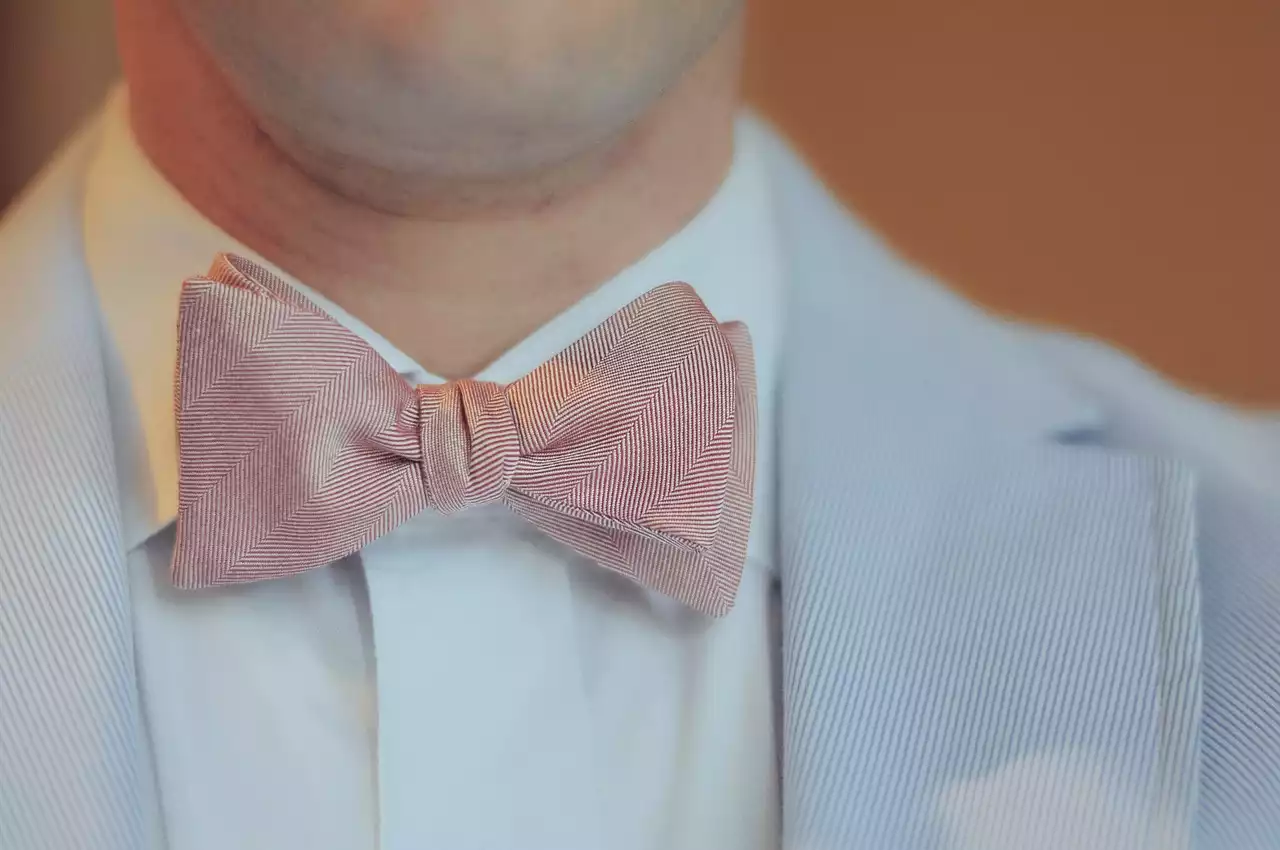1920s men’s suits were a huge break from the usual heavier and more restrictive clothing that was popular at the time. During this decade, men adopted a more relaxed and neutral style of dressing that reflected the new age of peace following World War I. Moreover, as American culture increasingly embraced modernism and ideas such as flappers, jazz music, and drinking in speakeasies became increasingly popular among young urban professionals. Men’s suits in 1920s America typically consisted of three pieces: a double-breasted jacket with wide lapels, a pair of matching trousers and an optional vest with no tabs; most suit jackets also had peak lapels. As for colors, these ranged from darker blues and greens to reds, oranges and yellows. The most distinguishing feature of mens suits in 1920s America was the dropped tailoring (also referred to as vanity sizing), which features a longer jacket that fits snugly around the hips but gives way to looser sleeves above the elbow; this gave men more mobility without sacrificing formality.
1920s Men’s Suits and Tails: A brief history
With the way the story of the suit’s origins is generally told, one could easily assume that the 1920s are when the suit became a standard part of men’s fashion. However, that is not the case, the suit had actually been around for a long time before the 1920s, although it was widely considered a style that was only worn by the upper class. During the 19th century, suits made from wool and other heavy materials were worn primarily by people in the upper class who did heavy physical labor or spent a lot of time indoors in winter. The people who wore lighter and looser fabrics like linen were mostly outdoor workers like farmers, gardeners, and longshoremen.
1920s Menswear - Mens Suits in America
In the 1920s, the suit was an essential part of any well-dressed man’s wardrobe. Not only were men’s suits more formal and stylish than ever before, but they were also more comfortable and easier to move in than their predecessors. While suits made from heavy fabrics were often warm and even stuffy, the fabrics used in suits in the 1920s were lighter and more breathable, making them an ideal choice for warm summer days. Moreover, unlike more formal suits of the past, men’s suits in the 1920s were normally unaltered, making them more affordable and accessible to a wider range of people. Although the suit itself is by no means a new invention, the way it was worn in the 1920s was significantly different from the way it is worn today. In the 1920s, people normally wore the suit with no undershirt or even a tie. The shirt was left unbuttoned and the top few buttons of the jacket were left open to keep the wearer as cool as possible.
1920s Mens Suits - What to Look For When Shopping
When shopping for a mens suit from the 1920s, there are a few things you should keep in mind. First, check if the suit has cuffs on the sleeves. If it does, it will be much easier to alter the suit to fit you perfectly. Furthermore, if the suit has a vest, make sure it has no tabs. Finally, make sure the suit is in good condition: tears, missing buttons, and stains are common problems with older suits. If you can find a high-end tailor who is willing to work with vintage clothing, you can have it altered to fit you perfectly.
1920s Men’s Suits vs. 1930s Mens Suits: What’s the Difference?
While the trends in menswear changed dramatically between the 1920s and 1930s, the suit itself remained largely the same. A key difference between mens suits in the 1920s and those in the 1930s was the use of new fabrics, such as rayon. When blended with wool, this created a more lightweight fabric that was much more breathable than pure wool. Another important difference was the addition of new pieces to the suit, such as belts that were worn with the trousers and the occasional use of suspenders. Additionally, in the 1930s, the suit gained popularity among a wider range of people. It was no longer just worn by the upper class: it became a part of everyday wear for people of all walks of life.
Conclusion
As we can see, the suit has a long and rich history that stretches all the way back to the Middle Ages. Since it has been around for so long, it has evolved quite a lot over the years. It has been worn by people of all classes, and it has come in many different styles and fashions. Whether you are dressing up for a wedding or a job interview, you can’t go wrong with a nice suit.


 The Magic of Shankra Festival
The Magic of Shankra Festival
 West Side Story and The Oscars
West Side Story and The Oscars
 Shakespeare and the Globe Theatre
Shakespeare and the Globe Theatre Men's Hat Fashions in 1920s America
Men's Hat Fashions in 1920s America American Men's Casual and Sportswear in the 1920s
American Men's Casual and Sportswear in the 1920s Children's Clothing in 1930s America
Children's Clothing in 1930s America 1930s Fashion for Men in America
1930s Fashion for Men in America